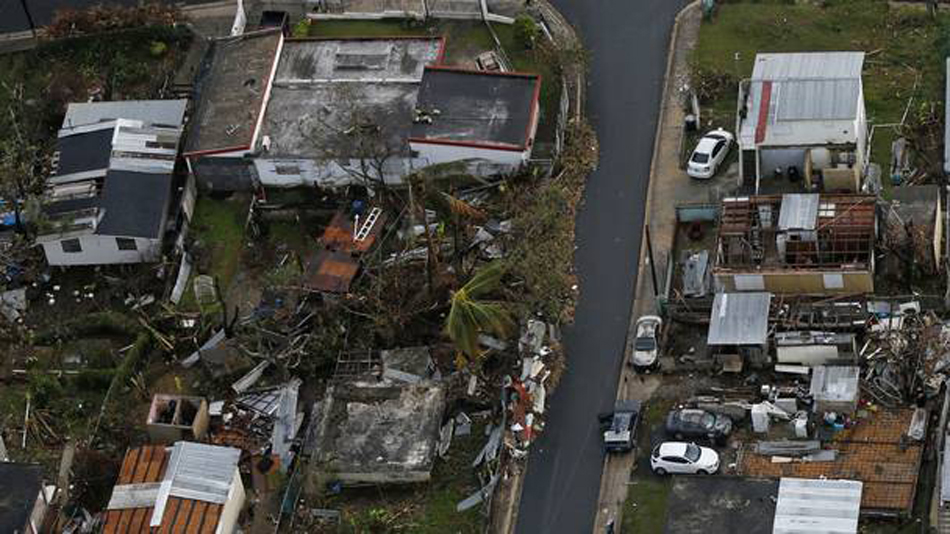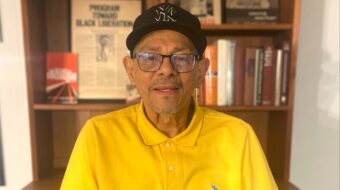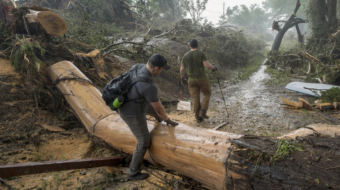
BOSTON—At least 4,645 people died in Puerto Rico due to Hurricanes Maria and Irma last September, a new professional study says – not the 64 tallied in the island’s official death count. And the island’s death rate jumped 62 percent in the three months after the storms hit.
And Harvard MDs Fabio Racy, Jay Lemery, Leslie Maas and Jennifer Leaning warn, in their article in the New England Journal of Medicine, that even their figure is probably an undercount.
The four professionals led a team surveying the impact of the storm. They questioned 3,299 randomly chosen households, interviewing 9,522 people in all of the 3-million-person island’s 900 barrios, “to produce an independent estimate of all-cause mortality after the hurricane.”
The four arrived at their figure by discovering deaths due to the storms that were not officially recorded as storm-related in the capital of San Juan. Their study covered the three months after the storms wrecked the island’s homes, hospitals, schools, municipal buildings, power grid, infrastructure and lives.
And that wreckage was a big reason for the Puerto Rican governor’s official count being so low, the MDs explained. Subsequent informal counts through last December put the death toll at 1,000 or so.
“From the survey data, we estimated a mortality rate of 14.3 deaths per 1,000 persons from September 20 through December 31, 2017,” the four reported. That’s the midpoint of an actual range of 9.8-18.9 deaths per 1,000 people.
The new death rate was “equivalent to a 62 percent increase in the mortality rate as compared with the same period” in 2010-16.
“However, this number is likely to be an underestimate because of survivor bias. The mortality rate remained high through the end of December 2017, and one-third of the deaths were attributed to delayed or interrupted health care. Hurricane-related migration was substantial,” the researchers added.
And if the highest death rate – 18.9 per 1,000 – is used, at least 8,498 people died, the researchers wrote.
A big part of the problem, the researchers said, was deaths could only be attributed to the hurricanes if the bodies were brought to the Institute of Forensic Sciences in San Juan – difficult if not impossible due to the wrecked roads – or identified as hurricane-related by a medical examiner who reached the scene.
And initial counts identified deaths as hurricane-related, the researchers said, only if they’re directly caused by such conditions as falling debris or by immediate power failures cutting off electricity to vital medical equipment.
In short, deaths in the months after the storms wrecked Puerto Rico, though caused by the hurricanes, weren’t attributed to them.
“Furthermore, although direct causes of death are easier to assign by medical examiners, indirect deaths resulting from worsening of chronic conditions or from delayed medical treatments may not be captured on death certificates,” they added.
The storms wrecked Puerto Rico so completely that lack of access to medical services led to many excess deaths, the researchers said.
“On average, households went 84 days without electricity, 68 days without water, and 41 days without cellular telephone coverage after the hurricane and until December 31, 2017. In the most remote category” of barrios, “83 percent of households were without electricity for this entire time period…In remote regions, households either recovered services relatively quickly or not at all for several months. Many survey respondents were still without water and electricity at the time of sampling, a finding consistent with other reports.”
Some 31 percent of Puerto Rican households, both in metro areas and in remote barrios, lost access to medical services, the researchers said. “The most common were inability to access medications (14.4 percent of households), the need for respiratory equipment requiring electricity (9.5 percent), closed medical facilities (8.6 percent) or absent doctors (6.1 percent). In the most remote barrios, 8.8 percent of households reported that they had been unable to reach 911 services by telephone.”
There was another big variable in the study, the researchers noted. Though the study took 10 minutes for each of the 9,522 people interviewed, another 268 had left those households after the hurricanes left – and 41 percent of those went to the mainland U.S. The researchers did not try to track those migrants. Puerto Ricans, unlike what some anti-Latino U.S. residents and politicians believe, are U.S. citizens.
The researchers’ findings did not surprise National Nurses United, which activated its Registered Nurses Response Network and flew 50 nurses from around the U.S. to Puerto Rico a few days after the storm. Other unionists joined that flight, such as Electrical Workers who volunteered to restore the power grid and Teamsters to navigate trucks on the wrecked roads. They all stayed for at least a month.
“This only confirms what our volunteer nurses on the ground in Puerto Rico saw firsthand: The people of Puerto Rico were left to die by an administration that failed its own American citizens,” said NNU Executive Director Bonnie Castillo, RN. She said the time period of the Harvard study, the first few months post-hurricane, is just a window in a longer-term public health crisis for Puerto Ricans.
NNU’s nurses came back in November, warning lawmakers and issuing a critical report on the federal government’s response – or lack of it – to ill and dying Puerto Ricans.
“Nurses on the ground saw that people were dying. Our volunteer RNs came back to the U.S. and said again and again, ‘The people of Puerto Rico are dying. Do something!’ This new study proves that inaction by this administration and inept contractors cost thousands of lives,” said Castillo. “And we can see that even today, over eight months since Hurricane Maria struck, the people of Puerto Rico have not been given the aid they need to fully recover, while we are headed right back into another hurricane season.”










